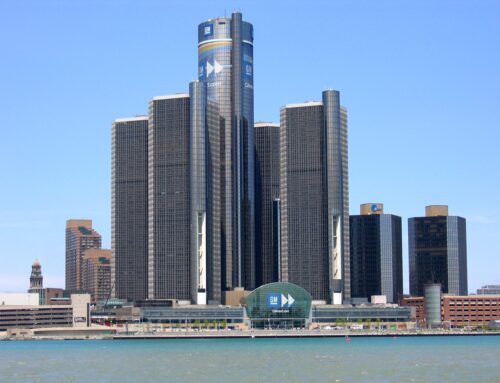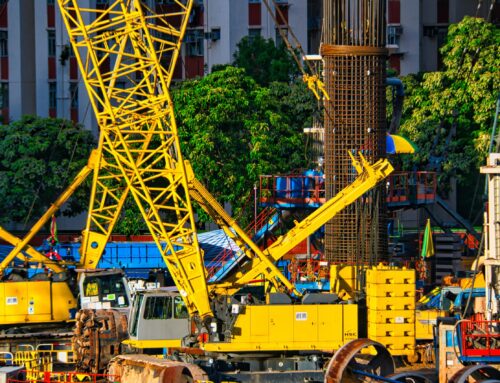Description and Details
In June 2013, the Nicaraguan government and Chinese businessman Wang Jing agreed on a bill to build the Nicaragua Grand Canal. The project will be undertaken by Wang Jing’s company, HK Nicaragua Canal Development Investment Company (HKND), and it will take 50 years to finance and manage the canal. Once announced, the project received opposition from residents and environmentalists globally.
In design, the Nicaragua Canal will be three times as long and twice as deep as the Panama Canal, crossing through Lake Nicaragua, the largest freshwater body in Central America. It will accommodate super-sized containerships which are not supported by the Panama Canal. The Nicaragua Canal is estimated to create 250,000 jobs, with half coming from abroad and mostly from China. Nicaragua’s leaders claim the project will double the GDP of the country, and could successfully lift the country out of poverty. Some points to consider for the project include who the benefactors are of the canal’s construction, and if it is even beneficial to build the canal in Nicaragua.
Details surrounding the project have been secretive, but HKND has claimed they will invest $50 billion and finish the canal within five years. Nevertheless, how HKND will finance the project remains unknown, and the company has limited experience with canal construction. Additionally, no environmental impact assessment has been performed, and the public is uninformed of the construction plan details.
Similar to Panama, the climate in Nicaragua is humid, with rain year-round. Since the canal route will be longer than Panama’s, more dirt will be dug and transported, leading to increased environmental impacts. HKND says it needs “more than 2,000 pieces of major construction equipment, four billion liters of diesel fuel, one billion liters of bunker fuel for the dredgers, 400,000 tons of explosives, and untold millions of tons of cement and steel”. These are just the equipment costs, not accounting for human labor costs and other factors.
Before construction, at least nine indigenous and Afro-Nicaraguan communities need to be relocated. This could lead to the extinction of some ethnicities, including their ancestral language. This could be seen as an unexpected consequence as relocation is often thought of as only moving the location of a home. Nevertheless, for some ethnic groups, the living environment is also part of their culture. Losing their living environment is going to ruin their culture as well. In this sense, Nicaragua Canal can lift people out of poverty at the price of their culture.
The vulnerable ecosystem in Nicaragua is threatened as well. For the water system, non-native marine species may invade Lake Nicaragua, and Nicaragua’s cichlid fish will be greatly affected. On land, there will be extensive land loss due to soil removal, and the local wildlife will be confined to the separation of land masses created by the canal’s structure. This means activities including migration, reproduction, and hunting may be hindered.
Additionally, saltwater intrusion from the canal may inhibit the freshwater of the lake, which could limit freshwater supplies for drinking water and agricultural practices. While the canal will bring profits to the community by charging the cargo that passes through, some may argue that the profit gained may not be worth the loss of such an essential water supply.
A similar problem with Bamaputra Dam, once built, no one can predict the lifetime of the canal in service. Two volcanoes sit in Lake Nicaragua, one of which is active. Along with the relatively large earthquake possibility, the canal may likely suffer from a natural catastrophe in the years to come. The recent natural disasters in Turkey and industrial disasters in Ohio could prompt some to reconsider the possibilities of the canal failing and the potential irreversible outcomes.
Since this is an international investment, the Nicaragua Canal unavoidably leads to political tensions, especially between the U.S. and China. Nicaragua Canal’s competitor, the Panama Canal, was built by the U.S. at a large cost. While Panama now has control over the canal, it’s still under the influence of the U.S. On the other hand, HKND is a Chinese company aiming to build the Panama Canal’s competitor. Although the Chinese government denies its involvement in this project, there is a chance that China will take over the canal in the future if there’s an economic or military need. Hence, the U.S. is opposed to the Nicaragua Canal.
One might consider if the world needs the Nicaragua Canal. With the Panama Canal’s expansion completed in 2016, it has doubled its capacity but does not allow vessels with more than 18,000 containers to pass. However, only 10% of world trade uses vessels unable to pass, and not all of them take Panama’s route. Due to the construction cost, the passing fee of the Nicaragua Canal for the first few years is likely to be more expensive than Panama, making it less competitive. Due to the factors outlined above, the project was suspended in 2018, and the initial investor, Wang Jing, declared bankruptcy and lost 80 percent of his $10 billion fortune.
CEE subjects: Geotechnical Engineering, Hydraulics and Hydrological Engineering, Environmental Fluid Dynamics
Discussion Questions
- Should the Nicaragua Canal be built? What factors are you considering in your response, and how might your bias impact your decision?
- This is a plan supported by the government, but opposed strongly by the residents. However, the government claimed that it was for the economic benefit of the locals. What do you think of the division between these two opinions?
- If the canal were to be built, what changes would you consider to make its construction more equitable and to limit the impacts on the surrounding environment?
References
- Peer reviewed articles
- Rethink the Nicaragua Canal
- The Nicaragua Canal: scenarios of its future roles
- Conservation: Nicaragua Canal could wreak environmental ruin
- Environmental pollution and shipping feasibility of the Nicaragua Canal
- The Nicaragua Canal: potential impact on international shipping and its attendant challenges
- Popular media/news references
- The Insane Chinese Plan to Build a Canal Across Nicaragua
- Controversial Nicaragua canal project delayed
- Lost in Nicaragua, a Chinese Tycoon’s Canal Project
- Why CHINA wants to build another canal in Central America if there is already one in PANAMA?
- How much does Panama earn from the Panama Canal?
- The fiasco that is the Nicaragua Canal, explained
- Rival to Panama Canal Planned
- The Gran Canal: will Nicaragua’s big bet create prosperity or environmental ruin?
- Books/memoirs




Leave A Comment